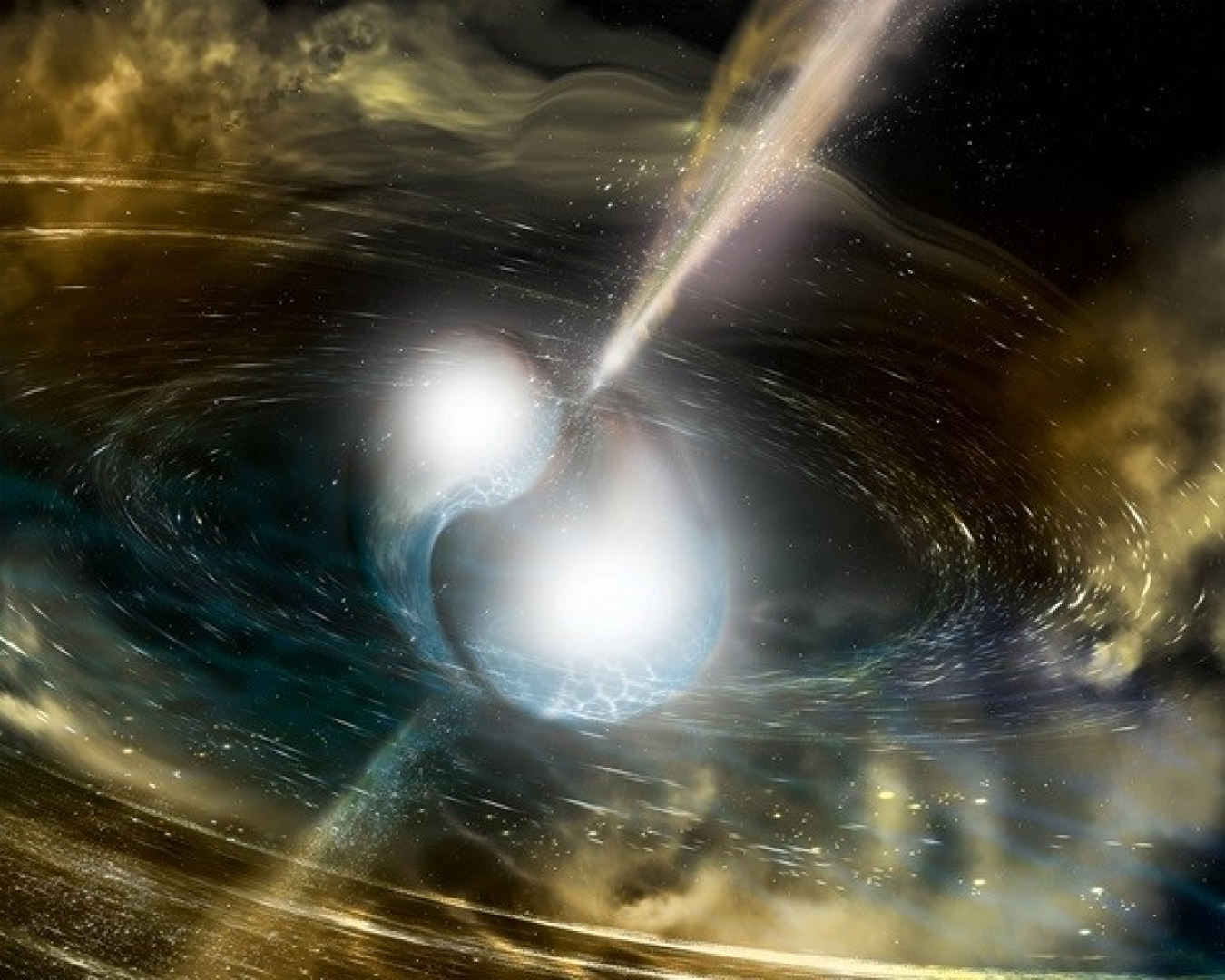
Nucleosynthesis is the creation of new atomic nuclei, the centers of atoms that are made up of protons and neutrons. Nucleosynthesis first occurred within a few minutes of the Big Bang. At that time, a quark-gluon plasma, a soup of particles known as quarks and gluons, condensed into protons and neutrons. After the universe cooled slightly, the neutrons fused with protons to make nuclei of deuterium, an isotope of hydrogen. Deuterium nuclei then combined to make helium. Further reactions between protons, neutrons, and different isotopes of helium produced lithium. The hydrogen and helium produced during this phase of the universe eventually created the universe’s first massive stars.
Since then, the nuclear reactions in the life and death of stars have formed most of the other nuclei in the universe. Stars can create nuclei through two processes: either by combining two smaller nuclei (called fusion) or breaking a larger nucleus into multiple nuclei (called fission). Both ways result in new atoms.
In the past, these processes also produced the elements on the Periodic Table that we know today. Stars of different types produce nuclei of different elements, leading over time to the range of natural elements. The universe’s first stars were massive, often more than 10 times the size of our Sun. They also had far shorter lives than stars that existed more recently. As they lived, they burned hydrogen and produced the elements up to iron in the Periodic Table. When they died, they ejected nuclei of these elements in a type of explosion called a core-collapse supernova. Supernovae can leave behind neutron stars. Scientists believe that violent neutron-rich environments such as the merger of two neutron start or supernovae produce the heaviest naturally occurring elements, including gold, platinum, and uranium. Optical observations of neutron star mergers provide evidence of possible nucleosynthesis of heavy elements. Other stars become white dwarfs as they die. These white dwarfs may also later merge and synthesize nuclei of elements.
DOE Office of Science: Nucleosynthesis Contributions
The Office of Nuclear Physics in the DOE Office of Science supports research in nuclear astrophysics—the physics needed to understand the reactions that produce the elements. Two university-based DOE Centers of Excellence, the Cyclotron Institute at Texas A&M University and the Triangle Universities Nuclear Laboratory, specialize in the study of nuclear astrophysics. DOE also funds the theory and modeling of the Big Bang, stars, supernovae, and neutron star mergers, all sources of elements. The DOE Office of Science’s Argonne Tandem Linac Accelerator System (ATLAS) user facility is home to the world's most powerful spectrometer for nuclear structure research. Moving forward, the Office of Nuclear Physics is now supporting the construction of the Facility for Rare Isotope Beams at Michigan State University. This accelerator will produce short-lived and never-before-seen neutron-rich nuclei that play a role in the production of the heaviest elements.
Nucleosynthesis Facts
- We consist mostly of elements like oxygen, hydrogen, nitrogen, carbon, calcium, and phosphorus that are created through nucleosynthesis in stars that have since died, leading to cosmologist Carl Sagan's famous statement that we are made of "star-stuff."
- Scientists believe the heaviest naturally occurring elements, including gold, platinum and uranium, are produced in violent neutron-rich environments such as the merger of two neutron stars or supernovae. Under these conditions, nuclei capture neutrons very quickly to produce heavier nuclei.
Resources and Related Terms
- Nuclear Astrophysics at Texas A&M University
- Nuclear Astrophysics at Triangle Universities Nuclear Laboratory
- Facility for Rare Isotope Beams at Michigan State University
- Cosmic Understanding from Miniscule Particles
- Science Highlight: Probing the "Equation of State" of Neutron Matter—The Stuff that Neutron Stars Are Made Of
Scientific terms can be confusing. DOE Explains offers straightforward explanations of key words and concepts in fundamental science. It also describes how these concepts apply to the work that the Department of Energy’s Office of Science conducts as it helps the United States excel in research across the scientific spectrum.

